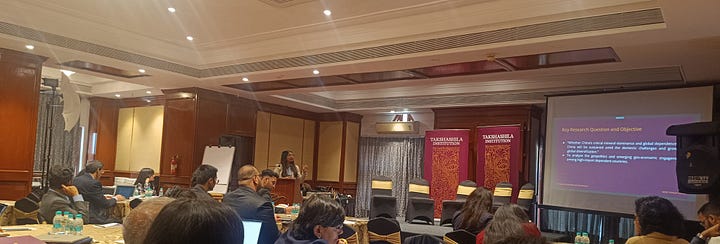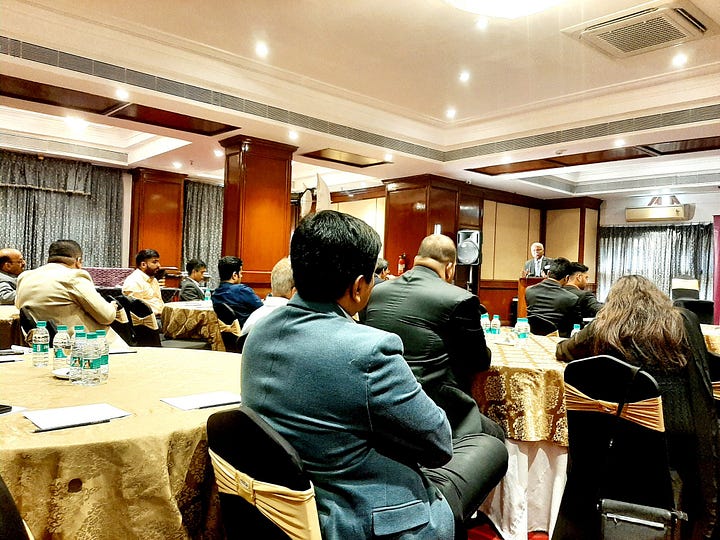Unravelling The Chinese Mystery, Page By Page
Quiz: Which historical monument, built in the early 15th century by over a million workers, is surrounded by a 26-ft high city wall and a 20-ft deep by 171-ft wide moat? Whose walls — which served as both defensive walls and retaining walls — are 28.3 ft wide at the base, tapering to 21.9 ft at the top? These walls are constructed with a rammed earth core and surfaced with three layers of specially baked bricks on both sides, with the interstices filled with mortar.
It is the Forbidden City, of course, the once-symbolic representation of China that often characterised the mystery that is the Chinese empire. Hundreds of historians and analysts have studied first the Ming dynasty and later the Qing dynasty keeping this palace complex at the centre of their academic interest. It is another matter that these days it has mostly touristic value, but its significance to Chinese history is never in doubt.
Takshashila Institution’s Network for Advanced Study of China (NASC) fellowship continues that fine tradition of studying China in the deepest possible manner — not only its contemporary politics and economics but also its culture, its impact on regional and global geopolitics, its relationship with India, etc. This year’s fellows — each of them with impeccable academic backgrounds — congregated in Bengaluru for an immersive three-day conference to present their papers and get a chance to talk face-to-face with some of India’s leading China experts, in addition to the mentors they had been interacting with during their programme.




The session chairs included Dr Devendra Kumar, Dr Sriparna Pathak, Dr Jabin Jacob, Rear Admiral Monty Khanna, Ambassador Ashok Kantha, Dr Kaushal Kishore Chandel, and Dr Bhim Subba. Mentors for the programme included: Prof. (Dr.) Alka Acharya, Dr. Jabin Jacob, Lt. Gen. Prakash Menon (retd.), Jude Blanchette, Aditya Ramanathan, Dr. Shambhavi Naik, Dr. Y. Nithiyanandam, and Manoj Kewalramani. Dr. Sriparna Pathak, Dr. Bhim B. Subba, Hamsini Hariharan, Dr. Devendra Kumar, Prof. (Dr.) Bali R. Deepak, Dr. Rityusha Mani Tiwary, and Mayuri Banerjee also participated as invitees to the conference.
The 2023-24 fellows were (in alphabetical order): Abhishek Sharma, Alok Kumar Chaurasia, Cherry Hitkari, Dhara Shah, Dr. Falendra Kumar Sudan, Gaurangi Kapoor, Harshit Prajapati, Dr. Kaustav Padmapati, KK Venkatraman, Manu Sharma, Neha Mishra, Raja Babu, Ritika Passi, Saurav Sarmah, Shruti Jargad, Sukanya Bali, Swayamsiddha Samal, Upamanyu Basu, and Vishal Sagar.
Cherry, Dhara, Manu, Neha and Dr Falendra were awarded for best papers at the conference.
Congratulations to each and every fellow for their exceptional research work and paper presentations.
You can get a full lowdown of what NASC is and how we conduct it right here.
NASP Winners Announced
After ten months of research and knowledge-sharing as part of the Network for Advanced Study of Pakistan (NASP) Fellowship, we are delighted to announce the awards for the pioneer NASP cohort. Stay tuned here for the next cohort of NASP.
The Strategic Importance Of Agni 5
How does one build on what is undoubtedly a military tech achievement, such as the AGNI-5 missile and its delivery of the Multiple Independently Targeted Re-entry Vehicles (MIRVs)? Well, develop the decision-making infrastructure, of course.
In his latest column for The Print, Lt Gen (Dr) Prakash Menon examines the options before India and how to execute them, given the existing chain of command and protocols.
For background: The apex body of the Nuclear Command and Control System (NCCS) is the Nuclear Command Authority (NCA), consisting of the prime minister and ministers of defence, home, external affairs and finance, the same as the Cabinet Committee on Security (CCS) and the National Security Council (NSC). From January 2003 onwards, the NCA comprised a Political Council chaired by the prime minister and an Executive Council chaired by the national security advisor. Only the PC can authorise the use of nuclear weapons. The EC provides inputs for decision-making and executes the directives given to it by the PC. No official indication has been given of the composition of the EC. It can be expected to have at least the chief of defence staff, chiefs of the armed forces, the commander-in-chief of the Strategic Forces Command and Heads of Departments of Defence, Atomic Energy and DRDO.
Now, for the real deal: creating an alternative chain of command. Lt Gen Menon writes:
“An alternative chain of command arises from accepting a critical vulnerability that needs to be addressed by nuclear strategy. The vulnerability pertains to two interconnected issues. Both arise from doctrinal prescriptions. One is about the fact that only the PC headed by the PM can authorise the use of nuclear weapons. Therefore, the PC can be a key target for the adversary and if neutralised successfully in the initial stages of a nuclear war, it could paralyse India’s ability to retaliate. This vulnerability is further exacerbated because India is a No First Use nuclear power. Nuclear strategy has to cater to the ability to absorb a nuclear strike and then retaliate.”
Lt Gen Menon’s piece looks at both the history as well as the future of this chain of command, and the ways to execute them. You can read his fascinatingly insightful piece here.
Narayan Ramachandran Tried Out Perplexity.ai. You Should, Too
What is the next Google? Is it Perplexity.ai? What is the role of generative AI models in the growth of the next stage of the Internet? Takshashila co-founder Narayan Ramachandran delves deep into what could be one of the alternatives for this next big leap.
He writes in his latest column for Mint:
“I predict that the biggest early use of AI technology for consumers will be in search. Most internet users already use search. While they will have to retrain themselves to query AI-augmented search engines, it is a simple task in natural language. The results are much richer, synthesized for use, with citations available for validation. Several new engines like Andi Search (offers video and synthesis), Metaphor (considers metaphorical nuances), Brave (good at summaries), Bing/Copilot (that embeds ChatGPT4), Google Gemini (that embeds Bard) and many others have emerged in the last few months. While ChatGPT stole the initial oxygen, the playfield is getting more competitive, and it is not clear who will win the long race. Google and Bing have the customer-base readily available, but the quality and speed of service (latency) of the service is still a wide-open arena and Google has more to lose from the migration away from regular search.”
You can read his full piece here.
The Chips May Be Down, But Pranay and Abhiram’s Book Is Going Places
In their latest international adventure, Pranay Kotasthane and Abhiram Manchi appeared on a global talk organised by the Hague Program on International Cyber Security, the Netherlands-based organisation that focuses on the various modes of governance that states and other actors can bring into play to deal with and shape the strategic changes and challenges in the digital environment. The 42-minute talk is an illuminating as it is interesting. Watch it here.
The Enduring Mystery of Taxi Fare Caps
Anupam Manur, professor of economics at Takshashila, made yet another strong case for his views on caps on taxi fares. We have written several pieces on this, so we won’t go there again, but suffice to say that if you did not read Anupam’s op-eds, you can watch an interview of his by Sathya Sankaran of Ooru Labs right here.
Wait, There’s More!
Takshashila co-founder and director Nitin Pai was invited by the Confederation of Indian Industry (CII) to discuss India’s increasingly important role in global geopolitics. You can watch his talk on the topic and the panel discussion here.
This week, we say goodbye to Police Chowki, the (even if we say so) excellent podcast series on India’s policing issues and reforms. In the final episode, Javeed Ahmad, one of India’s seniormost IPS officers, chats with Shrikrishna Upadhyaya on the trajectory of the show and reflect on the key takeaways from the conversations they have had so far. Listen to it here.
Our other notable podcast episode of the week was on Pune’s mobility conundrum. Though it is one of India’s fastest growing cities, Pune is not front and centre when it comes to transport policy. Why is it so, and how can we change this? Sanskriti Menon, Senior Programme Director at the Centre for Environment Education, joins Sachin Kalbag of Takshashila. You can listen to it here.
That’s all from us this week. Take care.





